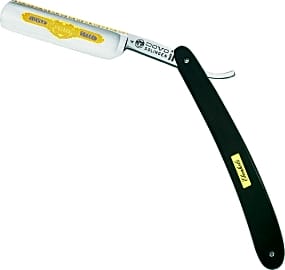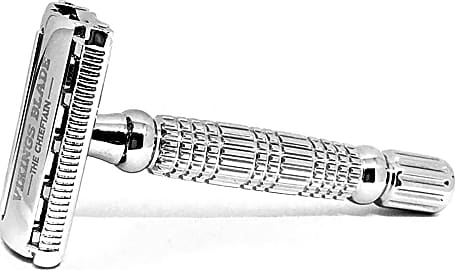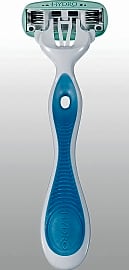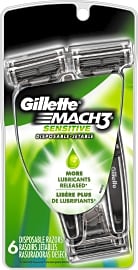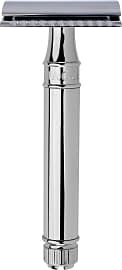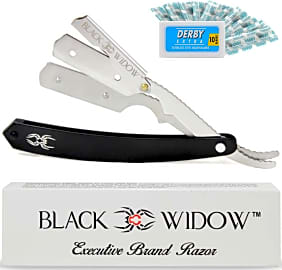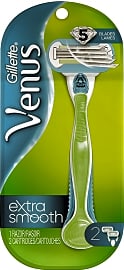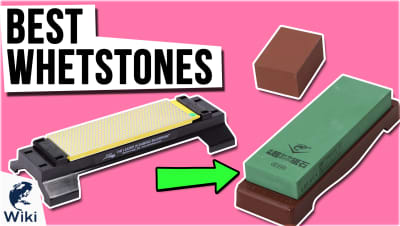The 10 Best Razors

This wiki has been updated 43 times since it was first published in June of 2015. If shaving is a part of your daily grooming regimen, make sure you are using a high-quality razor that not only provides a close finish, but does so without irritating the skin. We have come up with a comprehensive selection of options that includes everything from the best disposables for convenience through to straight razors for those who want the ultimate control and smoothness. When users buy our independently chosen editorial recommendations, we may earn commissions to help fund the Wiki.
Editor's Notes
May 20, 2021:
Generally speaking, there are a few main types of razors. The Gillette Mach3 is usually considered the most reliable disposable razor, although many women prefer the Schick Hydro Silk. Cartridge razors like the Gillette ProGlide are especially popular these days, but their main drawback is that the replacement blades can get awfully expensive. Safety razors, such as the Vikings Blade Chieftain and Feather Double-Edge AS-D2, our #1 choice, are highly recommended in terms of effectiveness and long-term blade costs, although they require a bit more care for safe use than many others.
Finally, if you're really dedicated to a premium shaving experience, consider a good straight razor. The Feather SS ACS-RB and Dovo Prima 1161 are two of the best such models. These are even more difficult to get the hang of than safety razors, but the most demanding beard wearers tend to swear by them. Also keep in mind that with straight razors, you'll end up having to do your own maintenance, for which you'll need a high-grit whetstone, preferably in the neighborhood of 10K to 15K mesh.
March 31, 2020:
There is nothing worse than red, inflamed skin after shaving. Hopefully one of the razors on this list can minimize the chances of you ever experiencing that again. For the average man, a disposable like the Gillette ProGlide or Gillette Mach3 will be sufficient for their needs. They both feature moisturizing strips and multiple blades to get a close shave without causing irritation or having to do multiple passes. The Schick Hydro Silk and Gillette Venus Embrace offer similar features, but are designed specifically for women and the different areas they tend to shave.
Aficionados and those who take serious pride in their grooming will probably scoff at the idea of using a disposable though. For these individuals we have included a nice variety of safety and straight razors to choose from. If you are taking your first step away from disposables, we recommend you start with a safety razor first, as these are easier to use than straight razors, yet still offer many of the benefits, such as an exceptionally close shave, higher-quality construction and materials, and cost savings over time. The Feather Double-Edge AS-D2 is one such example that most definitely boasts an exceptional build quality. It is handcrafted in Japan and durable enough to be passed down from father to son. Most will find it gentle on the skin too. It may be no surprise that such a premium model commands a lofty price, so if you are looking for something a little easier on the wallet, but which still shows you are a discerning person who takes pride in their grooming habits, you can look to the Viking's Blade Chieftain.
Anyone using a straight razor for the first time shouldn't expect to come out of the experience completely unscathed, but if you are willing to put the time in to learn to use one properly, and deal with the inevitable nicks in the beginning, you will find they offer a gratifying shaving experience that other forms of razors just can't match, as well as the ability to do some exceptionally fine detail work. A case in point would be the Black Widow Executive Series, which has 1.5 millimeters of blade exposure specifically for very detailed edging. This feature, which is helpful for experienced users, also makes it difficult for beginners to use. It is worth noting that the overall build quality of the Black Widow is nowhere near that of the Dovo Prima 1161, which boasts a carbon steel blade and a very elegant design. The downside of this model is that it requires regular maintenance to keep it sharp and in tip top shape. The Feather SS ACS-RB is sort of a middle ground between the two. Like the Black Widow, it is a shavette, which means it has the straight razor design but takes disposable blades, and like the Prima, it has a very high-quality build.
Special Honors
Ezra Arthur + Max Sprecher Signature With a full-sized 8/8-inch hollow-ground blade, you shouldn't have any trouble attaining any type of facial hair style with the Ezra Arthur + Max Sprecher Signature. It has ultra high-density carbon fiber uni plate scales that won't ever warp and its blade is forged from carbon steel that boasts a Rockwell hardness rating of 63, so it will retain its edge well after a sharpening. That being said, it does require regular maintenance if want it continue proving a good shave for years to come. ezraarthur.com
The Art of Shaving Rose Gold This limited edition set from The Art of Shaving and Mühle of Germany is an elegant option that provides a nice smooth shave. It includes a razor and badger brush, and a stand to hold them. The razor itself sports a closed comb, double-edged razor that is less aggressive than an open comb for better control, a finely engraved handle, and a copper and gold plating mix with chrome accents over Zamak metal. theartofshaving.com
Harry's Shave Club If you like disposables, but don't want to deal with the hassle of constantly going to the store to buy them, you might be well served by a subscription service like Harry's. They have a variety of razors and other grooming products to choose from, and will deliver them right to your front door for $2 or less per cartridge. That is a value that is hard to beat. harrys.com
Razor's Edge
There is a protective layer between the blade and the skin to facilitate a risk-free shave.
Hair. Everyone has it, and it needs to be groomed. For a lifetime. For the busy individual who wants little to do with the art of shaving, I would recommend the electric shaver. However, if you are willing to journey down the rabbit hole, you might be surprised to learn what a stainless steel razor blade has to offer.
There are three types of razors used for personal grooming: straight, safety, and disposable. A straight razor, also known as a cut-throat razor, might give you a hint as to the design right there in its name. Popularized by the Sweeney Todd drama, they can be very intimidating at first; the learning curve is steep and potential injuries can ensue.
When the safety razor appeared on the market, it was seen as an advancement to the straight razor. Given the prevalence of both straight and safety razors on our list, however, each clearly has its advantages. The safety razor consists of a solid handle with a disposable blade connected at a right angle, resembling a garden hoe. There is a protective layer between the blade and the skin to facilitate a risk-free shave.
The disposable razor is the most familiar option for today's on-the-go shaver. They are usually sold in packs and made of cheap plastic material. The entire razor is disposable and usually only provides one to three shaves before it is deemed too dull to use again.
Under the Blade
The type of razor you purchase depends on many factors: type of hair, comfortability, and price, among others. For women, a straight razor would be a poor choice; that blade is designed to shave the flat surfaces of the face and shaving the underarm with it would prove to be a challenge.
They are very cheap to purchase and they can provide a competitively close shave with less prep time.
The straight razor is for the consumer who has patience and enjoys the experience of shaving. The big advantage is durability. Provided they are sharpened and cleaned, these blades can last a lifetime. Before you purchase a straight blade, see if any older males in your family still own one. You can get it sharpened for a very low cost, or do it yourself, and it will work like new. As a straight razor user myself, I can safely say that they provide one of the closest shaves I have ever felt. I recommend visiting an old school barber shop to experience this shave.
What deters most from buying straight razors are the high costs and the risk of injury. While these are indeed the most expensive to purchase up front, over time they consistently prove to be the best value out of any razor on the market. The probability of cutting oneself with the razor is very high, but if you continue to hone your craft, the nicks will disappear.
Safety razors are intended for a long term of use as well, and many boast a lifetime guarantee. The blades are disposable, meaning new ones must be purchased consistently. While this may seem like a disadvantage, the replacement blades are cheap and you will never have to worry about sharpening your blade or stropping. They are priced reasonably and some boast beautiful designs.
The obvious advantage of the disposable razor is that it requires the least maintenance of all. They are very cheap to purchase and they can provide a competitively close shave with less prep time. They vary from one blade to five blades; the latter giving you the smoothest shave. Most will also boast an aloe strip to buffer the blade and ease the skin.
A Brief History of Razors
The straight razor emerged in England in 1680. Sixty years later, the handles sported ornate designs and became an artistic endeavor for smiths. After 200 years monopolizing the market, they lost popularity to the safety razor. Patented in the 1880s, this razor required less maintenance and skill, and had a low initial cost. Most consumers that went to a barber shop could now shave themselves in the comfort of their own homes.
Starting in the late 1990s, the idea of additional blades began to gain popularity.
The safety razor became wildly successful with the addition of the double edged blade. King C. Gillette supplied these blades to troops in World War I and the men returned home demanding more blades. While they required some skill and you had to hone your blade yourself, the idea of being your own barber flourished.
Up until the 1960s, all razors were made of carbon steel. In 1965, British company Wilkinson Sword switched to stainless steel and the entire industry was forced to follow suit. Today, almost every blade is stainless steel and not prone to rust.
In 1974, Bic introduced the entirely disposable razor. An aloe strip was included next to the blade to ease any discomfort while shaving.
Starting in the late 1990s, the idea of additional blades began to gain popularity. The subsequent blades raise the hair and are able to shave closer than one blade.
Today, all types of razors are vying for the coveted spot in the grooming market. The emergence of hipster culture has revived the safety and straight razor from obscurity. Also, stores like The Art of Shaving are successful at celebrating antiquated shaving methods. The disposable blade is still in demand, and its manufacturers continue to make advancements.



